Most homeowners never see termites until it’s too late. These wood-destroying insects stay hidden underground and inside your home’s structure for years before causing visible damage. By the time you notice sagging floors or hollow-sounding wood, thousands of dollars in repairs might be waiting.
But termites do leave clues if you know what to look for. Understanding what termites look like and recognizing the early warning signs can save you from costly structural damage. Let’s explore how to identify these destructive pests before they compromise your home’s foundation.
What Do Termites Look Like? Understanding Basic Termite Appearance
Termites are small, soft-bodied insects that work in organized colonies. The termites you’re most likely to encounter come in three main types, each with distinct appearances and roles.
Worker termites make up the majority of any colony. They’re cream-colored, eyeless, and about ¼ inch long. These are the ones actually eating your home’s wood, but they rarely venture into open air where you might spot them.
Soldier termites protect the colony and look slightly different. They have enlarged heads with prominent mandibles (jaws) and are also cream-colored. Soldiers represent only 2-5% of the colony population.
Winged reproductive termites (called alates) are the ones homeowners actually see. They’re dark brown or black with four equal-length wings. These emerge during swarming season to start new colonies.
Physical Characteristics: How to Identify Termites in the Mid-Atlantic
Eastern Subterranean Termites: The Most Common Termite Species in the Mid-Atlantic
The Eastern subterranean termite is the dominant structural pest in Virginia, Maryland, and Washington DC. These colonies can contain anywhere from 20,000 to 5 million individuals working together to find food sources.

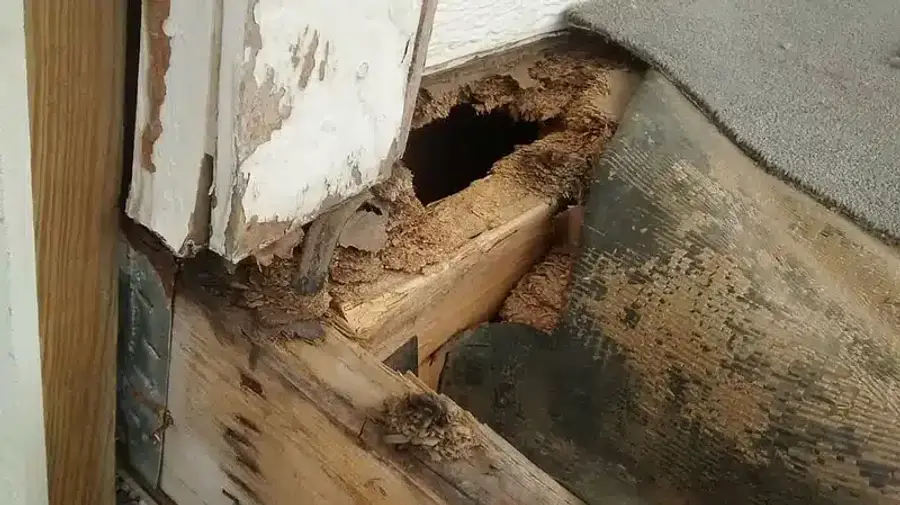
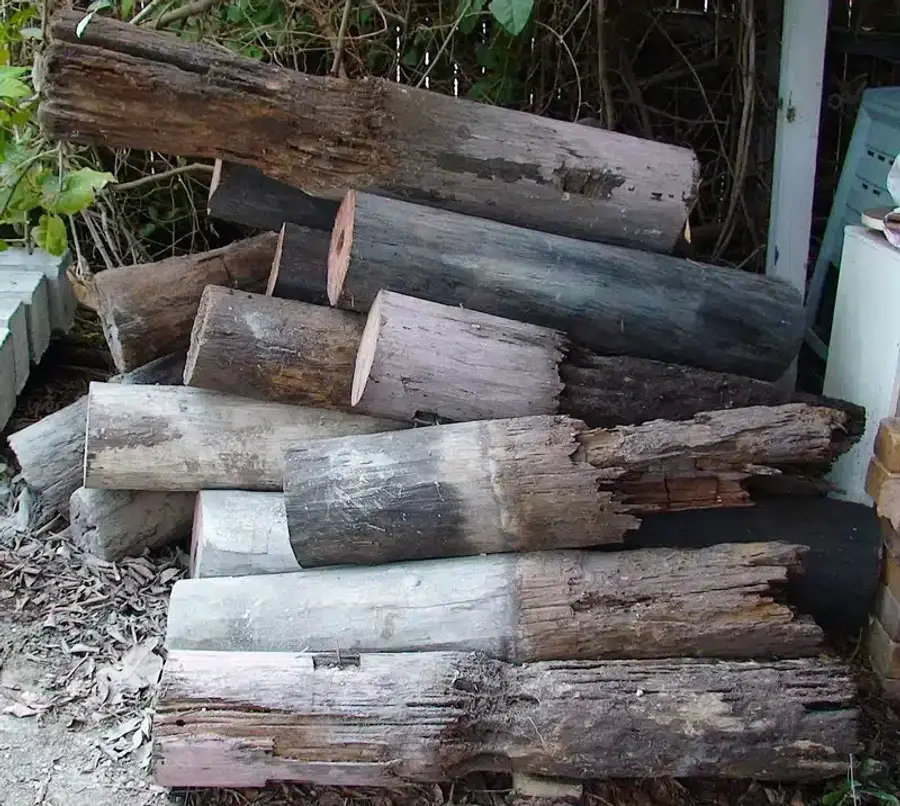

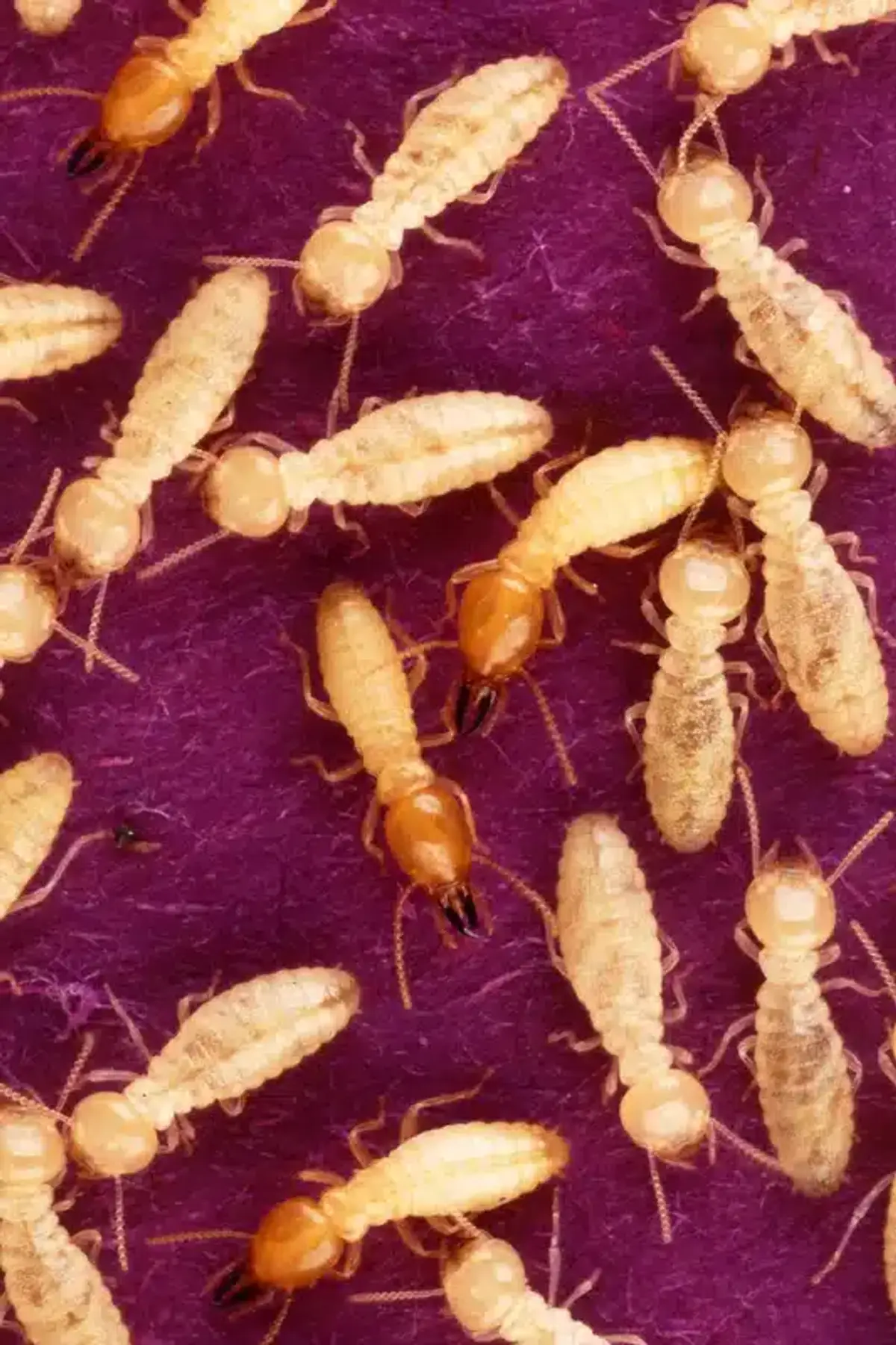
Worker termites from this species are cream-colored and eyeless, measuring roughly ¼ inch long. They spend their entire lives underground or inside wood structures, which is why most homeowners never see them directly.
When these termites do swarm, it typically happens between March and June on warm, humid days following rain. The winged reproductives shed their wings within minutes of landing, often leaving piles of identical papery wings as the first sign of their presence.
Formosan Subterranean Termites (Coptotermes formosanus)
Formosan subterranean termites are larger and more aggressive than their Eastern cousins. Often called “super-termites,” these non-native insects cause $1-2 billion in annual damage in the United States alone.
Fortunately, Formosan termites remain rare north of the Carolinas. Climate change projections suggest they may expand northward, but they’re not currently established in most Virginia, Maryland, or DC homes.
Why Dry-wood and Damp-wood Species Are Rare in VA/MD/DC
Unlike warmer southern regions, the Mid-Atlantic doesn’t support established dry-wood or damp-wood termite populations in most interior homes. Virtually all termite infestations in our area are subterranean and linked to soil moisture.
This means the termites threatening your home are coming from underground colonies, making them harder to detect but also more predictable in their behavior patterns.
Key Signs of Infestation: What Do Termites Look Like in Your Home
Termites rarely show themselves directly, but they leave behind clear evidence of their presence. Learning to recognize these signs can help you catch an infestation before major damage occurs.
Key Warning Signs of Termite Activity
Mud tubes are the most common sign of termite activity. These pencil-wide earthen tunnels appear on foundation walls, along joists, or spanning gaps between soil and wood. Termites build these tubes to protect themselves from open air while traveling between their underground colony and food sources.
Hollow-sounding wood indicates termites have been feeding inside structural elements. When you tap window sills, door frames, or baseboards with a screwdriver handle, infested wood produces a hollow sound instead of a solid thunk.
Shed wings appear in small piles near windows, doors, or light sources after swarming events. These wings are all identical in size and have a papery texture. Finding them means a mature colony exists somewhere nearby.
Other warning signs include blistered paint, sticking doors or windows, and sagging floors. These indicate structural damage has already occurred, meaning the infestation is well-established.
Termites vs Flying Ants: How to Tell the Difference
Many homeowners mistake flying ants for termites, especially during swarming season. Learning to distinguish between these insects can help you respond appropriately to what you’re seeing.
Termites have straight, bead-like antennae, while ants have distinctly elbowed antennae with a bend in the middle. This is often the easiest way to tell them apart at a glance.
The body shape differs significantly too. Termites have a broad waist connecting their thorax and abdomen, giving them a more uniform appearance. Ants have a narrow, pinched waist that creates distinct body segments.
Wing structure provides another clear identifier. Termite wings are all roughly equal in length and extend well beyond the body. Ant wings come in two different sizes - longer front wings and shorter back wings.
Real-Life Technician Story: The Alexandria Window Sill Surprise
During my training period, I accompanied one of our technician teams to a house in Alexandria, less than a quarter mile from our company owner’s home. The homeowners had noticed only a small bulge in their window sill where they’d added an addition to the house.
That tiny bulge turned out to be where termites had eaten completely through to the paint layer and were starting to break through to the surface. When we accessed the crawl space, we discovered years of hidden termite feeding throughout the area.
The mud tube network extended throughout the crawl space interior, and the structural damage was far more extensive than anything visible from the outside. This experience showed me just how sneaky termite infestations can be and why professional inspection matters so much.
That situation reinforced why catching termites early makes such a difference. What looked like a minor cosmetic issue from the outside represented thousands of dollars in structural repairs that could have been prevented with earlier detection.
Structural and Economic Damage: Why Appearance Matters
What Termite Damage Look Like: How Termite Feeding Undermines Load-Bearing Wood
Termites don’t just randomly chew through wood - they target specific parts of the wood grain that provide the best nutrition. They prefer the softer spring growth rings (earlywood) over the denser summer growth rings (summerwood).
This feeding pattern creates a particularly dangerous situation. Termites hollow out the structural wood while leaving only thin shells of the harder wood behind. The result is wood that looks intact from the outside but has lost most of its load-bearing capacity.
By the time you notice sagging or obvious damage, the structural integrity has already been seriously compromised. This is why visual appearance can be so misleading with termite damage.
National and Local Cost of Termite Damage
Termites cause approximately $11 billion in damage annually across the United States, with subterranean species responsible for the majority of that destruction. The average cost to remove an undetected termite infestation ranges from $1,000 to $2,000, plus an additional $3,300 in structural repairs.
In the Mid-Atlantic region, we’re located in the second-highest termite activity zone in the country. Our climate and soil conditions create ideal environments for subterranean termite colonies to thrive year-round.
The financial impact extends beyond immediate treatment and repair costs. Termite damage can significantly affect your home’s resale value, and mortgage companies often require termite inspections before approving loans.
Insurance Exclusions and Repair Challenges in VA/MD/DC
Insurance Alert
Most standard homeowner insurance policies exclude termite damage, considering it a preventable maintenance issue rather than a covered disaster. This means the full cost of treatment and repairs typically falls on the homeowner.
Additionally, termite damage often requires specialized structural repairs that go far beyond simple cosmetic fixes. Load-bearing elements may need complete replacement, and hidden damage can extend the scope of repairs well beyond the initially visible problem areas.
Conducive Conditions: Where Termites Thrive and What to Watch
Understanding what termites look like includes knowing where they’re most likely to appear. Certain conditions around your home create ideal environments for termite colonies to establish feeding sites.
Conditions That Attract Termites
Chronic moisture problems top the list of conducive conditions. Leaking pipes, clogged gutters, and poor drainage create the humid environments termites need to survive. HVAC units create thermal gradients underneath them - warm, dry areas adjacent to cooler, moist zones that termites use as navigation aids.
Earth-to-wood contact provides direct access from underground colonies to food sources. Common problems include mulch piled against siding, firewood stored against the foundation, and deck posts or stairs touching soil directly.
Inaccessible areas allow termites to feed undetected for extended periods. Cluttered crawl spaces, sealed-off areas under additions, and storage rooms prevent regular inspections that might catch early infestations.
Even seemingly minor issues like tree stumps near the foundation or poor exterior drainage can attract foraging termites to your property. Once they find a reliable food source, they establish pheromone trails that guide thousands of additional termites to the same location.
Inspection Protocols: Spot Termites Before Damage Escalates
DIY Monitoring Tips: What Termite Problems Look Like
Professional Inspection Process with Better Termite & Pest Control
Our professional termite inspections follow a comprehensive 78-point checklist covering both exterior and interior areas. Licensed technicians examine the foundation perimeter, probe soil for termite activity, and visually inspect for mud tubes or wood damage.
The interior inspection includes tapping trim around windows and doors, checking basement areas, and pulling back insulation to examine hidden wood surfaces. Crawl space access allows inspection of floor joists, sill plates, and support structures where termites often feed undetected.
Each inspection includes documentation of findings, treatment recommendations when needed, and guidance on reducing conducive conditions around your property.
Documentation, Warranties and Regulatory Compliance
Professional termite treatment in Virginia, Maryland, and DC requires licensed technicians who understand EPA regulations and state requirements. Licensed firms must provide detailed treatment diagrams, chemical information, and warranty terms that protect your investment.
This documentation becomes crucial for real estate transactions, insurance claims, and ongoing maintenance planning. DIY treatments lack the regulatory compliance and warranty protection that professional services provide.
Treatment Technologies: How Professionals Eliminate Termites
Understanding what termites look like helps explain why professional treatment methods work more effectively than DIY approaches. The hidden, underground nature of termite colonies requires specialized techniques to achieve complete elimination.
Sentricon Baiting System for Proactive Control
The Sentricon baiting system works by attracting termites to stations containing cellulose material treated with chitin-synthesis inhibitors. Termites consume the bait and share it throughout the colony through their natural feeding behavior.
This approach targets the entire colony rather than just the termites present at your home. It’s particularly effective for proactive protection and early-stage infestations where immediate structural threat isn’t present.
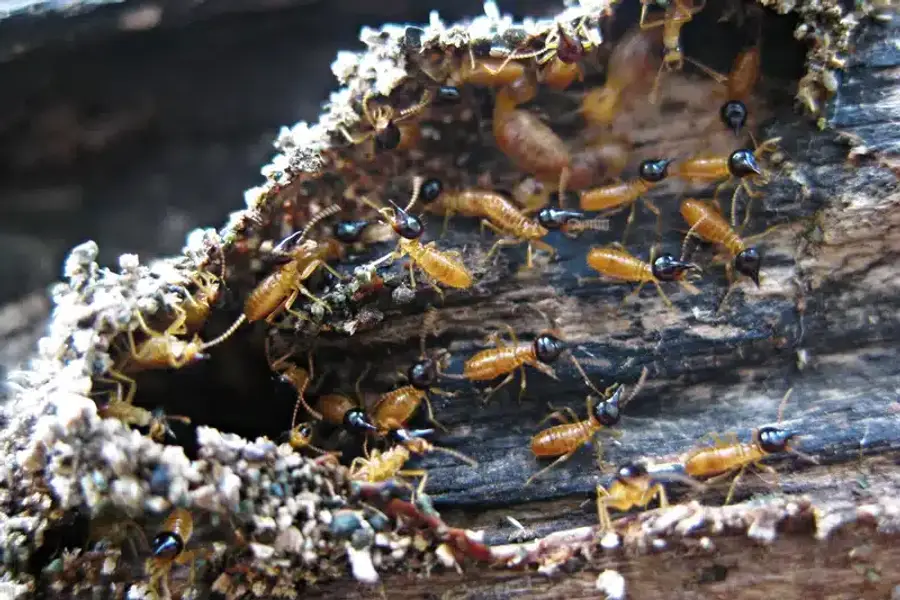
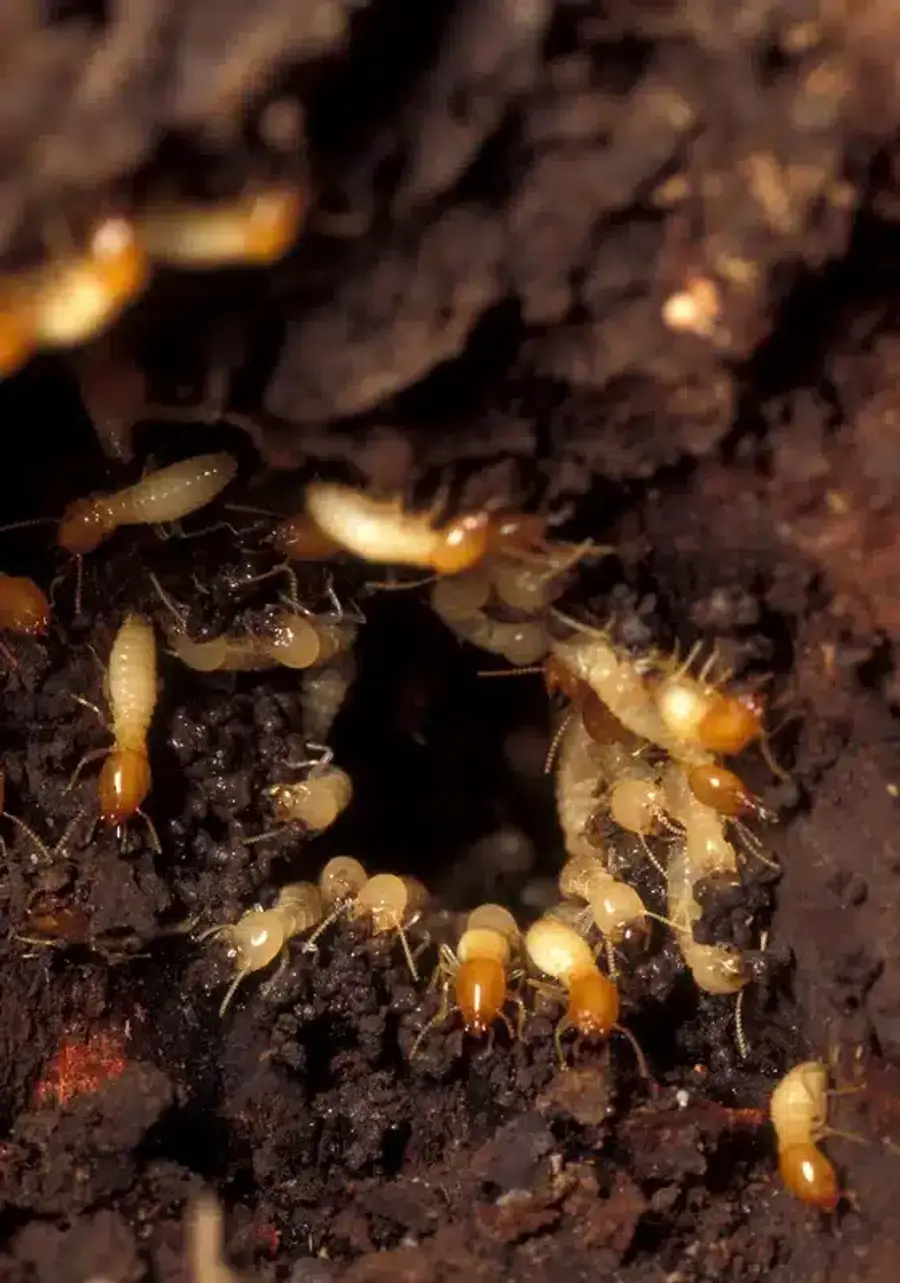
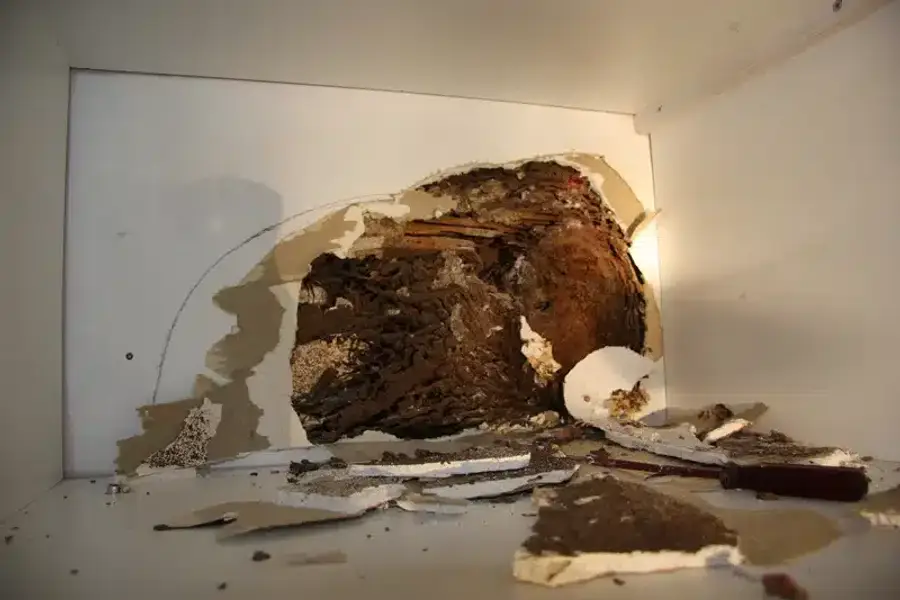
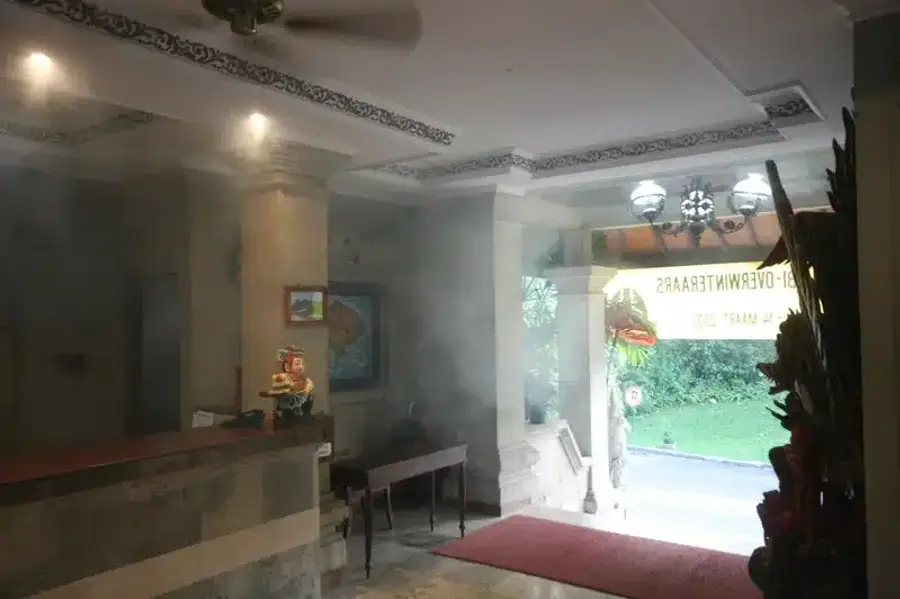
Based on my experience helping over 100 customers with termite issues, Sentricon systems provide excellent long-term protection when properly maintained. The key is catching termites before they establish extensive feeding sites in your home’s structure.
Termite Look Like: Liquid Soil-Applied Termiticides for Treatment
Liquid termiticides create protective barriers in the soil around your home’s foundation. Repellent chemicals like bifenthrin work by deterring termites from crossing treated areas, but they require perfect application to prevent gaps that termites might exploit.
Non-repellent formulations using fipronil or imidacloprid are undetectable to termites. This allows the “transfer effect” - termites pass through treated areas and spread the chemical throughout their colony through food sharing and grooming behaviors.
For severe infestations, I’ve found that non-repellent liquid treatments often work faster than bait systems. When termite populations are very high, they sometimes won’t find bait stations quickly enough to prevent continued damage.
Wood Treatments, Stainless-Steel Mesh and Stone Barriers
Specialized construction techniques can provide additional protection in high-risk areas. Borate wood treatments, termiticide-impregnated lumber, and physical barriers like stainless-steel mesh or graded stone create multiple layers of defense.
These approaches work best during construction or major renovations when access to structural elements is readily available. They’re not typically practical for existing homes without significant modification.
EPA Registration and Certified Applicator Requirements
Professional termite control products undergo extensive testing - over 100 toxicity and efficacy studies before EPA approval. Many formulations are classified as “restricted use” and legally limited to licensed applicators.
Proper application requires specific volumes and pressures - typically 4 gallons of finished solution per 10 linear feet in a 6-inch-deep trench. These requirements ensure adequate coverage while minimizing environmental impact.
Prevention & Long-Term Maintenance: Keeping Termites at Bay
Knowing what termites look like helps with prevention, but stopping infestations requires addressing the underlying conditions that attract them to your property. Effective termite prevention combines habitat modification with professional monitoring.
Annual termite inspections catch problems early when treatment options are simpler and less expensive. Even with protective treatments in place, environmental changes or new construction nearby can alter termite pressure around your home.
The most effective long-term approach combines Sentricon monitoring stations with targeted liquid treatments when needed. This provides both proactive colony suppression and immediate barrier protection if termites breach the monitoring system.
Regular maintenance includes managing moisture sources, maintaining proper drainage, and keeping wood materials away from direct soil contact. These simple steps significantly reduce the likelihood of attracting foraging termites to your foundation area.
Why Prompt Professional Treatment Is Crucial
The cryptic nature of termite colonies means that DIY termite treatments rarely intercept the underground tunnel systems that connect colonies to feeding sites. These galleries can extend over 200 feet from the nest and lie more than 12 inches below ground surface.
Professional treatments address the entire infestation system rather than just the visible signs. Proper trenching, volumes, and chemical selection require training and equipment that most homeowners don’t have access to.
The liability and warranty protection provided by licensed firms becomes crucial if treatment fails or additional damage occurs. This documentation protects your investment and provides recourse if problems develop after initial treatment.
From my experience, every additional month of delay increases both treatment complexity and repair costs. Termites don’t cause emergency situations measured in hours, but waiting months or years can turn a manageable problem into a major structural issue.
Frequently Asked Questions About What Do Termites Look Like
How can I tell if I'm seeing termites or ants?
+
Look at the antennae first - termites have straight, bead-like antennae while ants have distinctly elbowed antennae. Termites also have broad waists connecting their body segments, whereas ants have narrow, pinched waists. During swarming season, termite wings are all equal length while ant wings come in two different sizes.
What do termite mud tubes look like?
+
Termite mud tubes are pencil-thick tunnels made of soil, wood particles, and termite saliva. They appear tan or brown and run along foundation walls, floor joists, or span gaps between soil and wood. Active tubes feel moist inside and may contain live termites when broken open.
How do I know if I have termites in my home?
+
Beyond visible mud tubes or shed wings, listen for hollow sounds when tapping wood surfaces with a screwdriver handle. Look for blistered paint, sagging floors, or doors and windows that stick unexpectedly. [Professional inspection](/can-you-see-termites/) provides the most reliable confirmation of termite activity.
Can I spot termites inside walls without an inspection?
+
Termites working inside walls rarely create visible signs until damage is extensive. You might notice paint bubbling, wallpaper peeling, or small holes where swarmers emerged, but these appear only after months or years of feeding. Professional inspections use specialized tools to detect hidden activity.
When do termites swarm in the DC, VA & MD region?
+
Eastern subterranean termites typically swarm between March and June during warm, humid days following rainfall. Swarming usually occurs during daylight hours, and the winged termites shed their wings quickly after landing. Finding piles of identical wings near entry points indicates recent swarming activity.
How quickly can termites cause serious structural damage?
+
Established termite colonies can consume several linear feet of structural wood within a year of undetected feeding. The damage accelerates as galleries widen and more workers join the feeding site. [Early detection and treatment](/termites-spread-throughout-neighborhood/) prevent minor issues from becoming major structural problems.
What areas of my home should I inspect for termites?
+
Focus on foundation perimeters, crawl spaces, basement areas, and anywhere wood contacts soil. Check around plumbing penetrations, HVAC units, deck attachments, and areas with moisture problems. Window sills and door frames in ground-contact areas deserve special attention during inspections.
Are DIY treatments effective for termite infestations?
+
[DIY termite treatments](/how-to-kill-termites/) typically fail because they don't reach the underground colony systems that feed the infestation. Professional treatments like Sentricon baiting systems and properly applied liquid barriers address entire colonies rather than just visible termites. Licensed applications also include warranties and regulatory compliance that DIY methods lack.
With five years of hands-on experience in the pest control industry, George Schulz is a registered technician with the Virginia Pest Management Association and a proud third-generation professional in a family business that's been protecting homes for over 57 years. He manages and trains a team of service pros while also leading internal research efforts—recently spearheading a deep-dive review of thousands of documents on pest control materials to hand-pick the most kid and pet friendly, most effective solutions tailored specifically for homes in the DC metro area.
